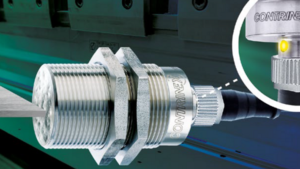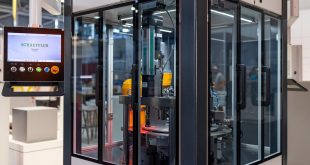An automotive manufacturer uses simple, low-cost inductive sensors to identify which style of chassis it receives in the body shop, to define what further processing should take place.
Customer application
The customer manufactures a wide range of vehicles and so as each body arrives at the body shop, operators use pulleys and clamps to lift it onto the line. Since the same body shop handles more than one type, reliable confirmation is required before any work takes place.
The customer, therefore, wants identification to take place as soon as the metal body is clamped into the lift at the reception point. There are two variations of the chassis. Identifying them confirms that the model corresponds to the operator’s production order.
Since the process involves the movement of large metal parts, the sensor used for identification should be rugged enough to withstand heavy impacts. The loading process is performed manually by an operator, so movements and positions are imprecise, while mechanical shocks to the sensor can be expected. A long sensing distance is required.
Customer solution
Contrinex’s DW-AS-703-M30-002 inductive sensor, available from PLUS Automation, is ideal for this application. The 700 Series sensor’s long sensing distances (20 mm in this case) detect equally well on both steel and aluminium, which is often called ‘factor 1’ sensing.
The sensor selected detects the absence or presence of a model-dependent metal part that identifies the model. If the wrong model is identified, an alarm is generated to warn the operator.
The Condet detection technology protects it from environmental and material influences. and its all-metal, AISI 303/V2A stainless-steel housing and sensing face protect it from corrosion and water ingress.
The 700 series of inductive sensors are much more resistant to mechanical stresses than conventional sensors which makes them ideal for this application since the process involves the movement of large metal parts.
The sensor used for identification should be rugged enough to withstand heavy impacts as the loading process is performed manually by an operator, so movements and positions are imprecise, while mechanical shocks to the sensor can be expected and a long sensing distance is required.
 Instrumentation Monthly Test | Measurement | Control
Instrumentation Monthly Test | Measurement | Control


